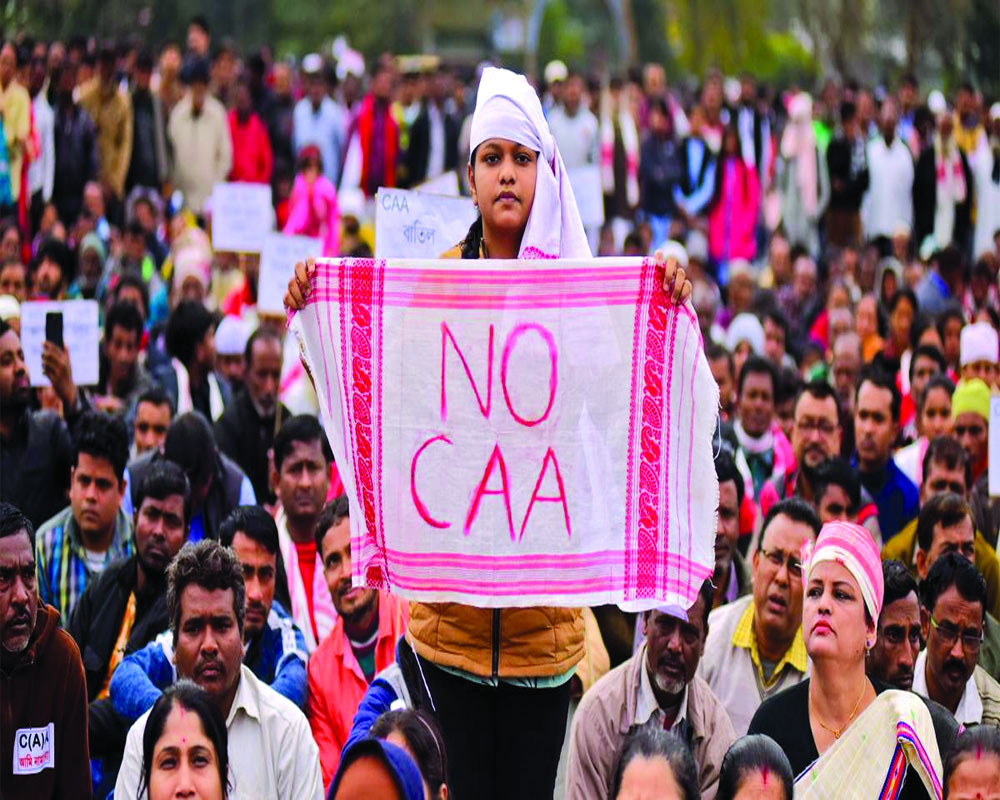Unless one has lived in or frequently travelled to Assam, it is difficult to understand what nightmares the Ahomiyas have when they think of infiltration
The Citizenship (Amendment) Act brings nightmares to the Assamese people for fear of further arrival of Bengali-speaking people from Bangladesh. The immigrants may be legal but the dilution of the local culture and the threat to the political voice of the Assamese would be about the same, regardless of how good the newcomers may be.
Before offering the remedy, two points need to be made. One, the Assamese, whether adivasis or more especially the modernised Assamese, are dead scared of being outnumbered by the Bengali-speaking people, whether Hindu or Muslim. Merely assuring people that protecting their culture is as much the Centre’s concern as securing the culture of the entire country, would not satisfy them.
Unless one has lived in or frequently travelled to Assam, it is difficult to appreciate what nightmares the Assamese have when they think of infiltration, whether legal or otherwise. They are a gentle people with a soft, peace-loving nature. They have their own festivals. They were gifted by nature with plenty of land and even more water and rivers. They do not have to work stupendously hard for survival. The climate is mostly warm and humid; it does not make itself congenial for hard work. They are not competitive by nature and, understandably, shudder at the fear of this ethos being disturbed by the outsiders.
Believe it not, until two decades ago, it was popular impression that the Congress’ strategy for winning elections in Assam was “Ali, Coolie and Bengali”. Coolie implied the tea garden workers and their families. Ali and Bengali are self-explanatory; they are mostly people who had over the years immigrated to Assam. Even the tea garden workers were adivasis brought from Jharkhand and other neighbouring areas to plant and pluck the bushes. To this day, it is difficult to find an original Assamese who is a plucker in a tea garden. In sum and substance, the Congress depended on the settlers from “outside” to win a majority vote.
In 1947, MA Jinnah nearly convinced the British rulers that Assam was a Muslim-majority province and, therefore, should go to Pakistan. Sheikh Mujibur Rahman, in his book Eastern Pakistan, stated that the tribals were not only not Hindus but also unfit for civilised life. The generally vague conclusion of the sympathisers for Pakistan was that Eastern Bengal and Assam should be combined into one province. Similar was the case made under the first partition of Bengal by Viceroy Lord Curzon in 1905. Fortunately, it was undone by 1911. Lord Pethic Lawrence, the Secretary of State for India in the Richard Clement Attlee Government of 1945-49, also swallowed this theory about an amalgamation of the two.
The deception was almost done when Gopinath Bordolai, an Assam Congress leader, rushed out to persuade those in the positions of power and influence that the Jinnah contention was untrue. As a result, Assam was saved for India except for Sylhet district, which had a Muslim majority. Any wonder then that the Assamese are afraid of allowing illegal migrants to settle down there? Incidentally, until 1874, Assam was a part of the Bengal Presidency. It was then separated and placed under the rule of a Chief Commissioner. To make Assam a viable separate province, three Bengali-speaking districts of the Presidency, namely, Goalpara, Sylhet and Cachar, were merged into the new province. That is how Assam began to host Bengalis as well as Muslims. The going of Sylhet to East Pakistan in 1947 relieved this pressure to an extent.
Assam, however, can ill afford to host more immigrants; the Assamese population is so small. The recent Citizenship (Amendment) Act is a major irritant for them, especially since what was discovered in 1979. Some young men discovered in the electoral rolls of the Mangaldai Assembly constituency that many a voter was an obvious infiltrator. In order to spread the protest and try and stop such distortion of the electoral rolls of the State, the All Assam Students Union (AASU) was formed. Some members also went on to establish the Assam Ganatantra Parishad (AGP), a major political party. A few members took to terrorism under the name of the United Liberation Front of Assam (ULFA).
The solution to a potentially very serious national problem would lie in making the Cachar region a separate Union Territory having no special political connection with Assam. Cachar has a population of nearly 40 lakh people, of whom a little over half are Hindu. Under two per cent are Christian and the rest are Muslims. More or less, all speak and write Bengali. Its economy is viable, especially with the help of over 100 tea gardens which produce five crore kilograms, worth around Rs 800 crore, annually.
That would separate about 16 per cent of Assam’s total population and virtually all of them are Bengali, whether Muslim or Hindu, a great relief to the Assamese. This is a surefire way to bring happiness to the Assamese people after at least a century. In any case, the Cacharis would be pleased at being demi-independent, with Silchar becoming a mini rajdhani.
(The writer is a well-known columnist and an author. The views expressed are personal.)


























